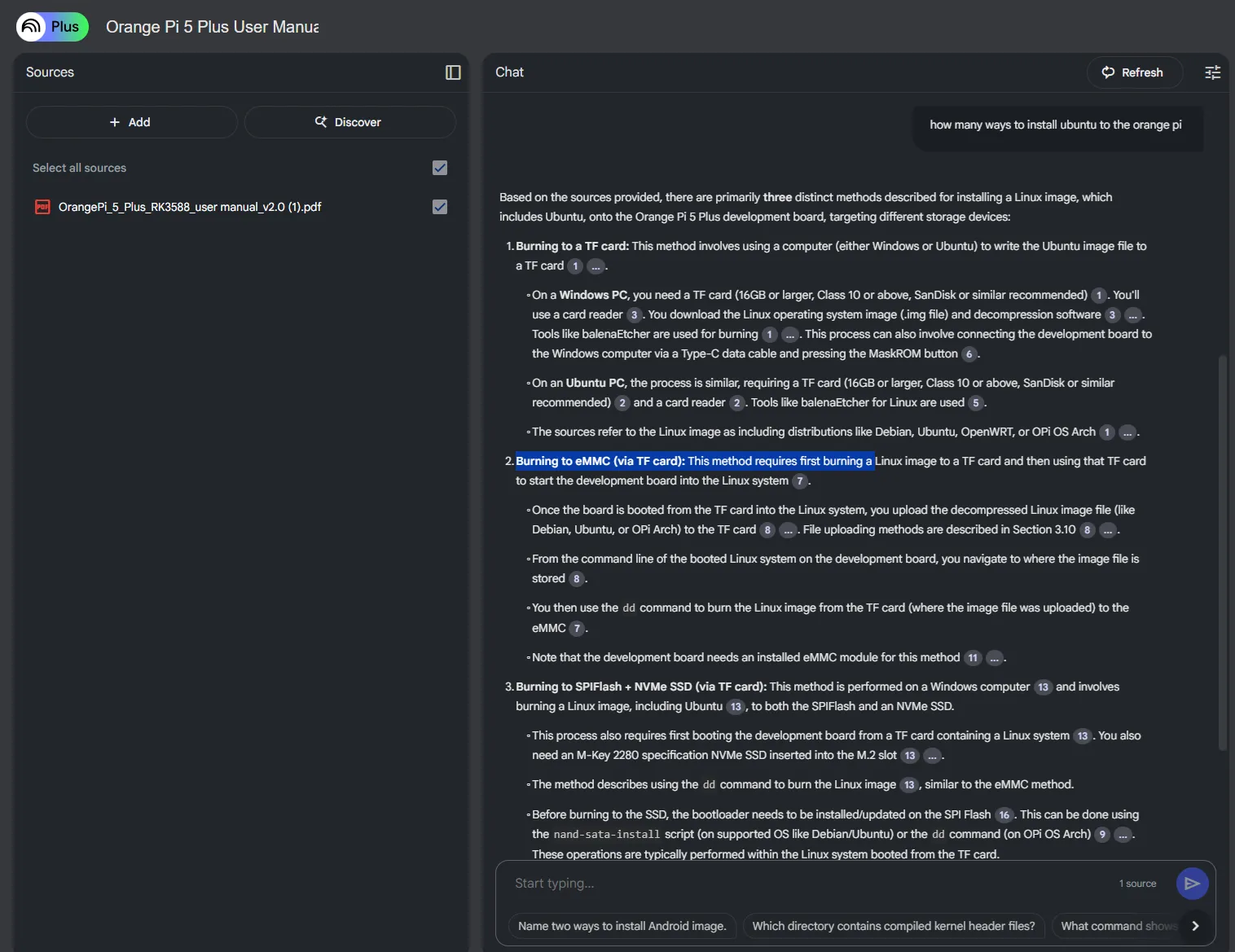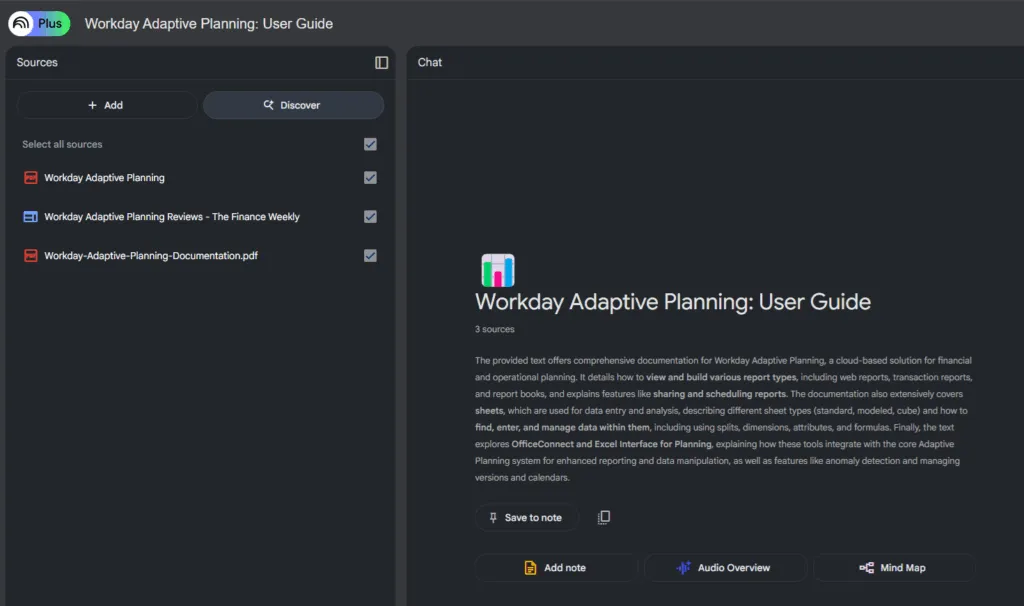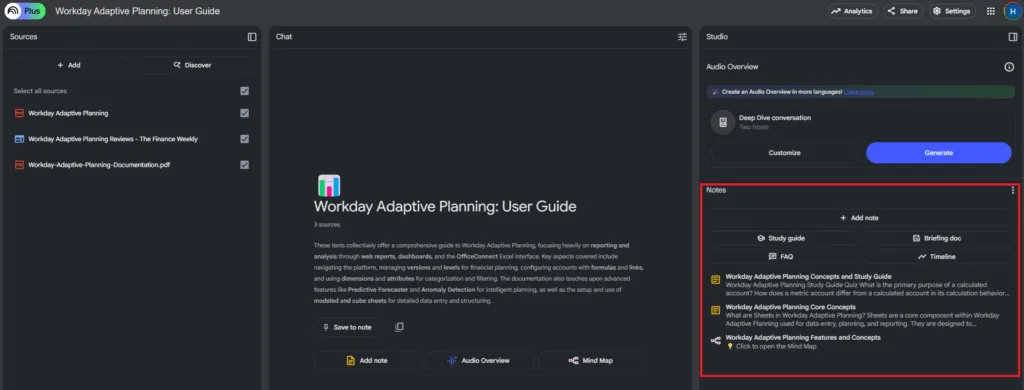Disclaimer: I am not affiliated with any of the brands or products mentioned in this post, and I do not receive any compensation for the links provided. These links are included solely for your convenience to help you find more information.
Welcome back, fellow wanderers, to Day 2 of “Unlocking the AI Toolbox – A Skill-Wanderer’s Journey”! It’s insightful how AI explorations intersect with daily work. Recently, a colleague asked if she could share my NoteBookLM Plus account, having heard it’s great for quickly extracting info from documents. She was drowning in reports!
That request highlighted NotebookLM’s value not just for tech enthusiasts, but for anyone needing to learn, research, or make sense of large texts efficiently—perhaps even at higher volumes or needing advanced features. So, for Day 2, we’re diving into what I consider a must-have for all learners and information-workers: Google’s NoteBookLM.
My goal isn’t just listing features. As a Skill-Wanderer, I want to explore how to wield this tool, its strengths, and how it aligns with my AI Compass: augmenting abilities with human oversight. Let’s explore NoteBookLM!
I. Why NoteBookLM is a Game-Changer (And Next Up in My Toolbox)

My colleague’s interest encapsulates NotebookLM’s promise: a personal AI research assistant, expert in your own information. Its defining “source-grounding” means its knowledge is strictly limited to your uploaded documents, becoming an “instant expert” on your materials.
I experienced this firsthand, as I mentioned in Day 1, when it helped me make sense of that massive Orange Pi manual. But it was more than just general sense-making. I was specifically trying to figure out how to install Ubuntu on its eMMC (embedded MultiMediaCard). The seller had told me they only knew how to install it on an SD card, which was less ideal for performance. I’d even bought an SD card based on that, which is now, amusingly, left for nothing!
Frustrated but hopeful, I fed the lengthy manual into NotebookLM and asked directly: “What are the methods to install Ubuntu on this Orange Pi model?” To my delight, NotebookLM pointed me exactly to the section detailing eMMC installation. It was a breeze to follow the instructions once I knew where they were. Without asking NotebookLM that specific question and having it search the document for me, I’m sure I would have missed that capability, relying only on the seller’s limited knowledge and wasting a lot more time. That discovery alone saved me significant setup hassle and showed me the power of having a tool that can deeply query your specific sources.
That experience, now reinforced by my colleague’s interest in the Plus version (perhaps due to its higher usage limits or collaborative features), is why NoteBookLM is front and center for Day 2. It directly addresses a common, critical challenge: the sheer volume of information we often face and the difficulty of extracting specific knowledge, aiming to be a “thinking partner”. Today, I’ll demonstrate its broader capabilities.
II. Getting My Bearings: Setting Up and Feeding NoteBookLM

For my main exploration this time, I decided to tackle a real beast: the “Workday Adaptive Planning Documentation.” This isn’t your average manual; we’re talking a colossal 2721-page PDF (Workday-Adaptive-Planning-Documentation.pdf) which you can find here: https://doc.workday.com/content/dam/fmdita-outputs/pdfs/adaptive-planning/en-us/Workday-Adaptive-Planning-Documentation.pdf and see the sample below. My specific goal was to quickly get up to speed on how “model sheets” are handled within this ecosystem as it related to my BA (Business Analyst) role.

Uploading even such a large PDF was handled smoothly.NotebookLM supports various formats: Google Docs/Slides, PDFs, web URLs, copied text, and YouTube URLs. It can even suggest web sources via “Discover Sources”. Remember, uploads like Google Docs are “snapshots”; changes to the original require re-syncing. As my AI Compass states: quality in, quality out. With the Workday document, its comprehensiveness was key.
”Tackling Dense Docs” – Putting NoteBookLM to the Test
With the 2721-page Workday document loaded, I put NotebookLM through its paces.
• Summarization Power – Conquering the Colossus: NotebookLM automatically generates an initial summary. For the massive Workday document, I asked for detailed summaries of sections related to “model sheets.” It quickly provided coherent overviews and key takeaways, making the dense material immediately more digestible. This wasn’t just a list of sentences; it was a genuine distillation of complex information. It also suggests related questions to dive deeper.
• Question-Based Interaction – Pinpointing “Model Sheets”: This is a core strength. You ask natural language questions, and the AI answers only from your documents. For the Workday manual, I queried: “What are the primary differences between cube sheets and modeled sheets?” and “Explain formulas in model sheets based on this documentation.” Critically, NotebookLM provides inline citations, linking answers to exact passages in your source. This is vital for trust and verification, allowing rapid location of relevant sections for your own critical review. Sifting through 2772 pages for these details manually would have taken days; NotebookLM did it in moments.
• Multi-Document Analysis & Visualizing “Model Sheets” with Mind Maps: While my Workday exploration focused on one huge file, NotebookLM can synthesize across multiple sources. But even with a single large document, its visualization tools are powerful. For my “model sheets” query, NotebookLM generated an interactive mind map. This visually connected “model sheets” to concepts like data import, versions, and reporting within the Workday documentation. Being able to see these complex relationships laid out, click on nodes for further summaries, and navigate the information visually made understanding the architecture an absolute breeze. It truly transformed a daunting research task into an efficient and insightful exploration. It can also analyze images in Google Slides/Docs!


Transforming Information: NoteBookLM as a Creative Partner
NotebookLM also helps create new things from your sources.
• Generating New Formats: From the Workday document, I asked it to “Create a study guide for the key concepts related to ‘model sheets’.” It produced key terms, definitions, and discussion questions. It also generates FAQs, tables of contents, timelines, and briefing documents. I prompted, “Create an outline for an internal training session on ‘model sheets,’” and got a solid starting point, great for overcoming “blank page syndrome”.
• Diving into Web Sources, YouTube, and the Audio Overview Surprise: One of the areas I was keen to test was NotebookLM’s ability to process web URLs directly. You might remember from my Day 1 post, I mentioned my very latest exploration was digging into something called an “MCP server” (Model Context Protocol server). To understand more, I fed NotebookLM the URL for the github-mcp-server repository. NotebookLM ingested the content, allowing me to query it to understand what github-mcp-server was all about. Then, “for fun,” I generated an Audio Overview from this source. As the document you shared described, it created an informative and entertaining podcast-style conversation between two AI voices (male and female) discussing github-mcp-server. The surprise was how human-like they sounded. My wife, hearing it, thought the female AI voice was a familiar (human) podcast host and mistook the male voice for human too! It shows how far this tech has come. NotebookLM can also process public YouTube video URLs, using their transcripts to provide summaries, answer questions, or even generate those audio overviews. This sounds incredibly useful for learning from the vast amount of educational content on YouTube. However, I must admit I haven’t had much opportunity to try the YouTube feature extensively. The reality for me, and likely for many of you, is that a significant portion of my learning material comes from paid e-learning platforms. I’m often immersed in courses on Coursera, Pluralsight, LinkedIn Learning, Udemy, DataCamp, ACloudGuru, and other fantastic (but subscription-based) learning sites. As a result, because NotebookLM needs direct access to the content URL, it’s currently unable to process materials that sit behind a login wall. This is a practical limitation for those of us who rely heavily on these structured, paid courses. If any readers have found clever workarounds or know of ways to bridge this gap with NotebookLM (while respecting content rights, of course!), I would be genuinely thrilled to hear about it and would gladly update this post with your insights!
• Multilingual Outputs: A valuable feature for those working across languages is the output language selector. You can choose your preferred language for generated text outputs like study guides or chat responses, making it easier to share work internationally.

V. NoteBookLM Through the Skill-Wanderer’s Compass: Reflections
Using NoteBookLM extensively brought several of my AI Compass principles into sharp focus:
• Augmenting Abilities: NotebookLM handled sifting and summarizing, freeing me for analysis and critical thinking. • Human Oversight & Verification: Citations are paramount. Google warns it can be inaccurate, so always verify. • Quality & Purpose: Output quality reflected input quality and focus. • AI Literacy in Action: Effective prompting is key. • An “AI General” in my “Specialized Army”? Yes, a specialized intelligence officer for my document “battlefields.” • Data Privacy: Google states Workspace content isn’t used for general model training or reviewed without permission. Personal accounts reportedly also have data privacy.
Key Takeaways & What’s in My NoteBookLM Toolkit Now
- Information Retrieval Perfected: A game-changer for large texts (like a 2772-page manual!).
- Summarization Superpower: Distills dense documents effectively.
- Content Creation Catalyst: Great for brainstorming and outlining.
- Learning Accelerator: Study guides, Q&A, mind maps, and audio overviews enhance learning.
- Source Grounding is Key: Answers based only on your sources (with citations) builds trust and avoids “hallucinations”.
Limitations (and the document confirmed):
• Text-primary, somewhat image analyze. • Accuracy isn’t perfect; critical verification needed. Can struggle with complex reasoning or specific formats. • Uploads are “snapshots”; refresh updated documents.
Despite these, NotebookLM is a prominent tool in my AI Toolbox.
What are your experiences with NoteBookLM or similar tools? Share in the comments! Let’s learn together.
Conclusion
NotebookLM has proven itself as an invaluable addition to my AI toolkit. From conquering massive documentation to generating creative content formats, it exemplifies the kind of AI augmentation that aligns perfectly with my Skill-Wanderer’s Compass.
The tool’s source-grounding approach ensures that I can trust the information it provides while still maintaining the critical human oversight that’s essential for quality results. Whether you’re drowning in research documents, need to quickly understand complex systems, or want to transform dense information into more digestible formats, NotebookLM offers a compelling solution.
As we continue this AI toolbox journey, tools like NotebookLM represent the practical, immediately useful applications of AI that can enhance our daily work without replacing our critical thinking and domain expertise. They’re the kind of “specialized soldiers” in our AI army that can handle the heavy lifting while we focus on strategy and insight.
What’s your experience with research and documentation challenges? Have you tried NotebookLM or similar tools? I’d love to hear about your experiments and discoveries in the comments below!


